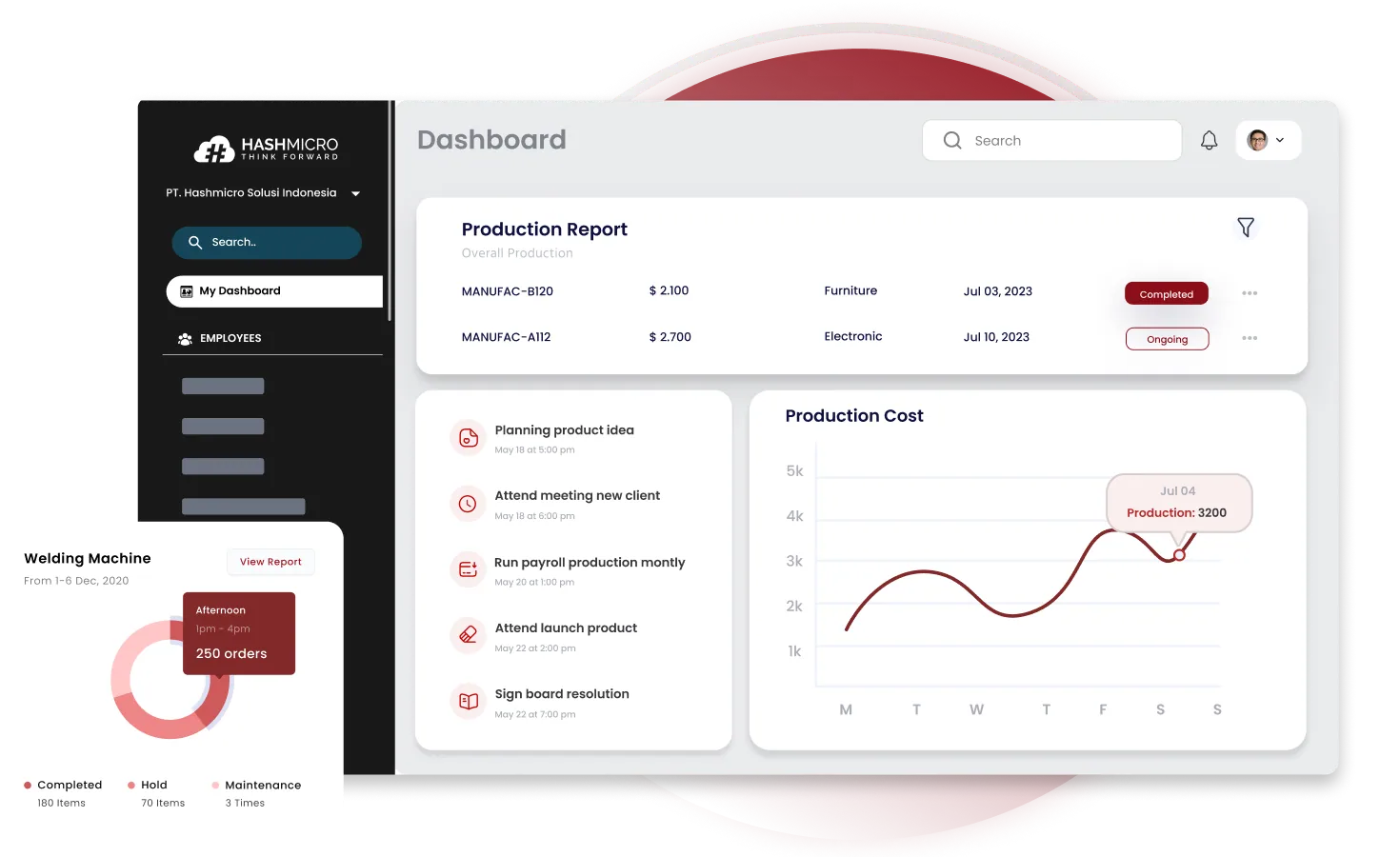Manufacturers often struggle with planning and scheduling in the Philippines due to reliance on manual methods or basic spreadsheets, which can lead to errors, missed deadlines, and higher operational costs.
This is where advanced planning and scheduling (APS) systems come into play. These systems are designed to tackle these issues head-on, offering a robust solution that enhances resource utilization, boosts production efficiency, and slashes lead times.
In a survey by the Department of Trade and Industry (DTI), manufacturers who adopted APS systems reported a 20% increase in production efficiency and a 15% reduction in operational costs. Imagine meeting market demands faster and more efficiently — assign, di ba?
This article aims to convince businesses in the Philippines to embrace APS systems and leave behind the old, inefficient methods. By utilizing APS’s advanced features, manufacturers can streamline operations, make data-driven decisions, and improve their financial performance.
Key Takeaways
|
Table of Contents

What is an APS (Advanced Planning and Scheduling) System?
Advanced planning and scheduling (APS) is a set of tools and methods used in manufacturing, production, and supply chain management to improve planning and scheduling efficiency. These tools help make informed decisions about capacity and resource utilization.
APS offers a more robust alternative to traditional methods like T-cards, whiteboards, project management software, and reliance on planners’ instincts. It combines various tasks, constraints, and activities, such as preventative maintenance and quality control, in ways that traditional methods cannot match.
APS tools help balance demand with resource availability, making it easier to determine the most efficient and cost-effective production methods. This includes planning when and how to produce and identifying the necessary resources. Managers can predict material and labour needs in advance, enabling data-driven decision-making instead of guesswork.
Although APS can function as a standalone system, it is often used alongside enterprise resource planning (ERP) or material requirements planning (MRP) software to create a comprehensive, integrated production system.
Key Features of Advanced Planning and Scheduling System
Advanced planning and scheduling systems have various features designed to enhance production efficiency. Here are some of the most critical features that make APS systems indispensable for modern manufacturing:
- Demand forecasting uses historical data, order pipelines, and market trends to predict future demand. It helps manufacturers know how much stock and resources they need throughout the year. Advanced techniques like time series analysis, regression analysis, or machine learning can make forecasts more accurate.
- Production planning and scheduling Involve planning and sequencing production tasks to meet specific goals. An effective APS system, combined with robust production planning tools, considers material needs, setup times, production lead times, and task dependencies. This integration results in an efficient schedule that optimizes resource use.
- Capacity planning assesses and manages the production capabilities of equipment, machinery, staff, and materials. Real-time visibility is crucial, allowing manufacturers to monitor resources, inventory levels, and production assets and adjust as needed.
- ‘What if’ analysis or production modeling uses data to simulate different scenarios. Managers can see the potential impact of changes in demand or supply chain issues and plan accordingly.
- Multi-user functionality lets different departments and teams view and interact with live plans simultaneously, ensuring everyone works from the same information. The interface should be easy to use and update, whether on the shop floor or in the head office.
- Constraint-based scheduling: This allows the APS system to schedule operations around multiple constraints, such as equipment, labour, and materials.
Why Do Manufacturers Need Advanced Planning and Scheduling Software?
Production planning systems often start manually when a business is new, such as daily schedules created by a manager or using an Excel spreadsheet. However, these methods become ineffective as the company grows.
Human-based solutions are prone to errors, which makes it difficult to achieve business goals. They also lack effective performance tracking and only rely on major indicators. On the other hand, spreadsheets quickly become chaotic and unmanageable as they accumulate too much information.
Consider the aerospace industry to highlight the need for better solutions. Manufacturing an aircraft involves coordinating millions of parts. For example, an Airbus A380 has over 4 million individual components sourced from around the world.
In 2022, Airbus delivered 661 commercial aircraft, which requires precise coordination of parts across global production facilities.
Achieving this with basic planning methods is impossible. Airbus needs advanced planning systems to manage capacity and output and sophisticated scheduling programs for detailed work plans. An APS system meets both of these needs.
Read more: manufacturing execution system
Benefits of Advanced Planning and Scheduling
Implementing advanced planning and scheduling (APS) systems can revolutionize manufacturing operations. Here are some of the key benefits that businesses can expect when they integrate APS into their processes:
- Increased capacity and efficiency: APS systems help companies schedule resources efficiently, allowing them to fit in more production batches and increase throughput. These systems reduce downtime and bottlenecks by optimizing production processes, leading to shorter lead times and lower operational costs. For instance, Deloitte reports that companies using APS see efficiency improvements up to 20%.
- Better resource utilization and cost savings: These systems maximize output by managing resources effectively and minimizing waste. This leads to significant cost savings by reducing expenses like overtime labour and material wastage, ultimately enhancing overall financial performance and supporting a more competitive and sustainable operation.
- Reduced lead times and real-time monitoring: APS shortens production timelines and improves responsiveness by better-coordinating production stages. Real-time visibility into shop floor activities allows managers to monitor and adjust processes continuously, enabling faster production cycles and quicker responses to market demands.
- Accurate forecasting and scenario planning: APS provides precise demand forecasting, helping manufacturers optimize inventory levels and reduce the risk of stockouts or excess inventory. It also allows companies to simulate different production scenarios, considering potential risks and disruptions and improving overall resilience and preparedness.
- Ensuring compliance and promoting sustainability: These systems help companies adhere to regulatory requirements like Good Manufacturing Practice (GMP) and safety protocols, reducing the risk of non-compliance penalties. They also support eco-friendly practices by minimizing waste, helping companies meet environmental goals, and enhancing their reputation.
These benefits illustrate the significant impact that APS systems can have on manufacturing efficiency, cost reduction, and overall operational performance.
Key Components of an Effective Advanced Planning and Scheduling (APS) System
An effective APS system enhances manufacturing and production efficiency by providing comprehensive tools for managing financials, materials, human resources, machinery, and production methods. Each component plays a vital role in ensuring seamless operations and maximizing productivity. Here’s how:
- Financial Oversight: APS systems integrate with accounting software to streamline financial management, facilitating better budget control and capital management.
- Material Management: Effective handling of raw and finished goods is crucial for operational efficiency. APS systems provide real-time tracking and insights into material availability and demand trends, helping to prevent overstocking and stockouts.
- Workforce Management: APS systems enable flexible human resource management, allowing labor-level adjustments according to production needs. This particularly benefits businesses with seasonal demands, as it facilitates hiring additional workers when necessary.
- Machine Utilization: Monitoring and maintaining machine efficiency is essential for maximizing productivity. APS systems manage machine schedules and maintenance, ensuring equipment operates smoothly and minimizing downtime. This leads to better overall machine performance and increased output.
- Optimized Production Methods: APS systems support adopting advanced manufacturing techniques for improved efficiency and productivity. This is especially beneficial in food manufacturing, where precision and timing are critical to maintaining product quality and safety.
By integrating these components, APS systems ensure that all aspects of production—financial management, material handling, human resources, machinery, and production methods—are aligned and optimized.
Challenges in Implementing Advanced Planning and Scheduling
Despite the clear benefits, integrating APS systems comes with its own set of challenges. Understanding these obstacles can help manufacturers prepare and mitigate potential issues:
- System Configuration: It is vital to configure the APS system at the appropriate complexity level. If the system is too detailed, it becomes cumbersome to maintain and update. Conversely, it lacks the precision needed for accurate planning and scheduling if it’s too simplistic.
- Resistance to Change: Employees and internal stakeholders may be accustomed to existing processes and fear that a new system will disrupt their roles or routines. Overcoming this resistance requires clear communication about the APS system’s benefits and ROI, along with a realistic timeline for implementation.
- Regulatory Compliance: Manufacturers must invest time and resources to customize the APS system to meet specific compliance requirements. This often involves adapting existing processes, thoroughly documenting procedures, and ensuring traceability throughout the production cycle to meet regulatory standards.
- Training and Skill Development: Training staff to use the APS system effectively is essential to maximize the investment. Providing ongoing support ensures a smooth transition and effective adaptation to the new technology, helping staff become proficient and confident in using the system.
MRP vs APS: What’s the Difference?
Material requirements planning (MRP) systems were some of the first software tools for managing inventory, acting as early versions of APS systems. MRP systems help plan the production of finished goods by figuring out what components and raw materials are needed.
However, MRP systems assume unlimited production capacity. This assumption is a major flaw because it doesn’t account for real-world constraints and changing priorities.
Advanced planning and scheduling (APS) systems were designed to handle these issues. They use advanced math techniques like Linear and Constraint-based Programming and consider practical constraints and priorities.
Additionally, modern manufacturing ERP systems, such as Katana, offer features like real-time master planning, which allow for easy reprioritization of orders and automatic rescheduling of workflows to adapt to changes in demand.
Also read: Production Planning in ERP Finance Systems
Boost Your Manufacturing Efficiency with HashMicro Manufacturing Software
Boost your manufacturing efficiency with HashMicro Manufacturing Software, one of the best manufacturing software in the Philippines. This system features robust advanced planning and scheduling (APS) capabilities to address resource optimization, production scheduling, and real-time monitoring.
With HashMicro’s APS, you can manage production schedules more effectively, reduce downtime, and increase productivity for smoother operations.
HashMicro Manufacturing Software also integrates seamlessly with other systems, offering a comprehensive solution for your manufacturing needs. Whether linking with accounting software or ERP systems, HashMicro aligns and optimizes your production for greater efficiency and growth.
Below are the best features of HashMicro’s manufacturing software to improve the production process:
- Work Center Dashboard: This feature is a central hub, allowing supervisors to monitor and analyze activities across various work centres. Tracking machine status in real time ensures more effective production planning.
- Production Plan: This feature is a comprehensive guide that manages the entire production process—from planning to execution. It enables efficient scheduling, resource allocation, and continuous production progress monitoring.
- Master Production Schedule: This feature is the foundation for all manufacturing planning. It helps forecast sales, organize production, and ensure material availability, preventing potential disruptions.
- Bills of Material (BoM): The BoM feature manages a complete list of components needed for production. It assists in planning by calculating material costs and ensuring that all necessary materials are accounted for.
- Production Work Order: This feature organizes work instructions and oversees production. It provides operators with clear instructions and efficiently tracks production data.
- Production Cost Actualization: HashMicro’s manufacturing software offers a detailed breakdown of production costs, including indirect expenses. It provides a clear financial picture of production activities, aiding in more informed planning.
- Production Record: This feature tracks history and actual production times, allowing for performance review and identifying areas for improvement.
- Material to Purchase: This feature ensures that necessary materials are available when needed, supporting planning by managing automated purchase requests and material storage.
Conclusion
In conclusion, Advanced Planning and Scheduling (APS) systems are game-changers for manufacturers in the Philippines. They help tackle persistent challenges like production delays and resource mismanagement.
HashMicro’s manufacturing system is your best bet for overcoming these hurdles. It has powerful APS features that optimize production schedules, reduce downtime, and boost overall efficiency. Moreover, it integrates seamlessly with other systems, providing a comprehensive solution that aligns every aspect of your manufacturing process.
Don’t miss out on transforming your business operations—try HashMicro’s manufacturing system today and experience the difference. Access the free demo now and take the first step towards revolutionizing your production process!

FAQ About Advanced Planning and Scheduling
-
What are the characteristics of advanced planning and scheduling?
APS systems have characteristics such as higher profit margins, better use of human and material resources, timely product deliveries, and reduced waste, leading to more streamlined operations.
-
What are the major components of an advanced planning and scheduling system?
Key features of APS systems are production scheduling, capacity planning, and material requirement planning (MRP). While ERP software also handles these tasks, it doesn’t offer the advanced decision-making capabilities of APS software.
-
What are the uses of advanced scheduling techniques?
APS techniques solve practical issues like scheduling with uncertain time estimates, integrating planning with resource allocation, and managing schedules in poorly defined situations.
-
What is planning and scheduling in maintenance?
Maintenance scheduling involves planning the timing of tasks and assigning who will do them, focusing on maximizing work with the available resources.























